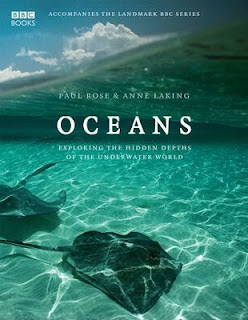





What lies below the frozen Arctic ice-sheets? Or in the black holes under the Caribbean Sea?
The oceans are Earth's single most important feature. They shape our climate, our culture, our future. Yet we know more about the surface of Mars than we do about Earth's watery depths.
Explorer Paul Rose leads a team of ocean experts in a series of global science expeditions. With him, maritime archaeologist Dr Lucy Blue investigates our past and our relationship with the sea, exploring shipwrecks and lost civilisations; marine biologist and Oceanographer Tooni Mahto seeks the extraordinary life in our oceans today; and environmentalist Philippe Cousteau Jr looks to the future of our oceans and charts the way they're changing. Filmed in High Definition in some of the most beautiful, diverse and threatened seas on our planet, the team travels across the world to the Southern Ocean, the Atlantic, the Indian Ocean, the Red Sea, the Sea of Cortez, the Arctic Ocean and the Mediterranean, to dive the depths of the world's seas and oceans. The planet's seas are changing fast and Oceans builds up a timely global picture of our planet's most magnificent and vital asset.
Part 1: Sea of Cortez
The Sea of Cortez, also known as the Gulf of California, is a unique corner of the Pacific Ocean. This remarkable young sea is thought to be around five million years old and home to nearly 900 species of fish and the widest variety of whales and dolphins found anywhere on Earth. Some of the greatest changes threatening the world's oceans today can be seen in this stretch of water.
Part 2: The Southern Ocean
The Southern Ocean, which circles the globe without being blocked by land, is home to the Antarctic Circumpolar Current (ACC), the longest of the world's ocean currents. Also known as the "channel", it connects the Indian, Atlantic and Pacific Ocean basins and exerts a powerful influence over the Earth's climate. The ACC carries 150 times more water around Antarctica than the flow of all the world's rivers combined.
Part 3: The Red Sea
The Red Sea is one of the youngest oceans in the world and one of the warmest. The northern region, with its diverse array of marine life, is one of the most visited dive locations on earth while the southern end remains virtually unexplored. It's a global hotspot for marine biology and an important trade route throughout human history, linking the trade goods of India and the Far East with the markets of Egypt and Europe.
Part 4: The Atlantic
The Atlantic is the second largest ocean on the planet. It is the resting place of the Titanic, home to the mysterious Bermuda Triangle and is the youngest of the Earth's great oceans. It reaches depths of 8,500 metres. Oceans investigates this influential body of water from a group of islands in its western reaches - the Bahamas.
Part 5: The Indian Ocean
The Indian Ocean is the third largest body of water on Earth at more than 6,000 miles wide and covering 13% of the world's surface. It is home to 5,000 species of fish, many of which only exist in the Indian Ocean. But it is also an ocean under threat from global issues such as over-fishing and climate change, which make this an ocean on the edge.
Part 6: The Indian Ocean Coastal Waters
The tropical Indian Ocean is home to the Spice Islands. Characterised by beautiful sandy beaches, fringing coral reefs and coastal mangrove forests, this is a vibrant nursery area for marine life, such as whale sharks, crabs, seahorses and a great variety of fish. The coastal areas are where humans have the most direct impact on the ocean's resources.
Part 7: The Mediterranean Sea
The sparkling blue waters of the Mediterranean Sea are home to over 700 varieties of fish and almost 10 per cent of the world's marine species. Its coastline is one of the most densely populated in the world and the human pressure on this sea is magnified each summer with the influx of holiday makers. Western civilisation developed around these shores but now human activity is having a profound effect on this endangered sea.
Part 8: The Arctic Ocean
With much of it covered in ice all year round and with no daylight from October to March, the Arctic Ocean is one of the world's most remarkable oceans. Its home to a multitude of unique life forms, all highly adapted to cope with the extreme and seasonal conditions. The impacts of climate change are more strongly felt here than anywhere else in the world.






0 comments:
Post a Comment
Thank you so much for taking the time to leave me a comment!